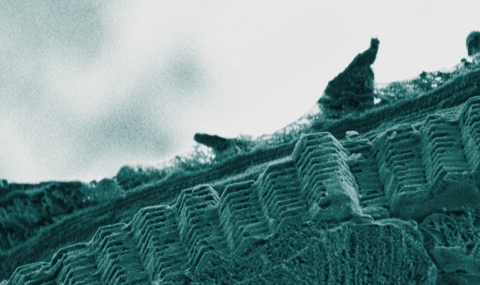Biomineralization is all about the uptake, transport and deposition of ions in the form of a mineralized tissue. Marine organisms derive their ions from sea water and food, and terrestrial organisms derive ions mainly from their food. The challenge of concentrating and transporting the huge amounts of ions needed to build the skeletal materials is terrific. Marine organisms need to extract and concentrate all the calcium ions from volumes of sea water orders of magnitude greater than the volume of all its cells, to build the skeleton. And this occurs in hours. How can this be accomplished is not yet understood, and is the subject of our studies on zebrafish bone, sea urchin larval spicules and foraminifer shells.
 |
Zebrafish caudal fin bone formation
|
|
|
Bone formation is a well-studied subject. Nevertheless, the mineralization pathways and initial stages leading to mineral formation are still unclear. This study aims to better characterize the ray anatomy of the zebrafish tail, as a convenient model for bone formation. We observe the cellular and extracellular matrix environments associated with the bone at the initial stages of mineralization, to elucidate the transport pathway of ions and transient mineral phases involved in bone formation - from early mineralization stages (cellular or extracellular) to the formation of the mature mineral at the mineralization front. |

 |
Amorphous calcium carbonate deposition in the cells of sea urchin embryos
|
|
| This research focuses on the formation mechanism of the embryonic sea urchin endoskeleton, consisting of two spicules, specifically with respect to the initial stages of mineral deposition. The aim is to characterize Ca concentrations, pH, physical state and mineral phase in intra-cellular vesicles. This will be achieved through combining imaging and spectroscopic techniques under cryogenic conditions. |

A video showing cryo-FIB-SEM serial section: Movie
Vidavsky, N., Addadi, S., Schertel, A., Ben-Ezra, D., Shpigel, M., Addadi, L. and Weiner, S., . PNAS (2016): 201612017.
 |
The mineralization pathways in Foraminifera
|
|
|
Foraminifera are marine protozoans, which deposit an outer protective calcitic shell, and are widespread in oceans throughout the world. The main aim in this research is investigating the mineralization pathways of foraminifera from sea water, through the cell and cellular organelles and into the shell. This is done through several objectives: Establishing and applying a novel cryo SEM- fluorescence correlative technique to observe mineralization pathways in foraminifera; Characterizing atomic disorder in the calcite shells of different foraminifera; and investigating the calcium mineralization pathway using cryo-SEM, cryo-EDS and cryo-Raman |
3D movie of a specimen of Amphistegina lobifera showing the outer shell morphology: Movie
Khalifa, G. M., Kirchenbuechler D., Koifman N., Kleinerman O., Talmon Y., Elbaum M., Addadi L., Weiner,S. and Erez J. JSB, 196(2), 155-163



